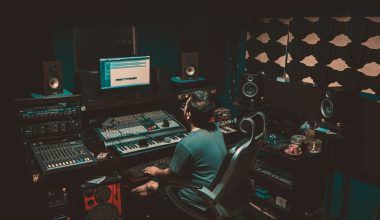Imagine creating a song that sounds amazing on every device, whether it’s a car stereo, mobile phone, or high-end speaker. That’s what audio mastering does. It’s the final and most important step in music production. Mastering polishes your song, balances the sound, and makes it ready for streaming, radio, or CDs.
If you’re an artist, producer, or even just curious about music, this blog will teach you everything about mastering audio techniques in a simple way. No technical jargon—just helpful tips you can use right away!
Why is Audio Mastering So Important?
You’ve spent hours recording and mixing your song. But even the best mix needs mastering. Why?
- Makes Your Song Stand Out: Mastering ensures your music sounds professional.
- Balances the Sound: It adjusts volume levels and frequencies so every instrument is clear.
- Prepares for Different Devices: Whether it’s a small phone speaker or a club sound system, your song will shine everywhere.
- Meets Industry Standards: Platforms like Spotify and YouTube have specific audio requirements. Mastering makes sure your song is accepted.
Tools You’ll Need for Mastering Audio
You don’t need a fancy studio to start mastering audio. Here are some basic tools you can use:
- Computer or Laptop: Any decent computer works.
- DAW (Digital Audio Workstation): Software like GarageBand (free for Mac users) or Audacity (free for everyone) is great for beginners.
- Headphones or Speakers: Use good-quality headphones or studio monitors to hear every detail.
- Plugins for Mastering: These include EQ (equalizer), compressors, and limiters. Many DAWs already have these tools built in.
Getting Started with Mastering Audio Techniques
Let’s break this into simple steps so it’s easy to follow.
Step 1: Prepare Your Song
Before you start mastering, make sure your song is well-mixed. Check these points:
- There’s no clipping (distortion caused by high volume).
- Each instrument can be heard clearly.
- The vocals are at a comfortable volume.
Step 2: Equalization (EQ)
EQ is like adding seasoning to your food—it enhances the flavors.
- What to do: Use EQ to adjust frequencies. For example, if the bass is too loud, reduce the low frequencies. If the vocals aren’t clear, boost the mids.
- Why it’s important: A good EQ makes your song sound clean and balanced.
Step 3: Compression
Compression keeps your song’s volume consistent. Without it, some parts might be too loud and others too soft.
- What to do: Apply gentle compression. Set the ratio to 2:1 or 4:1.
- Why it’s important: Compression makes your song sound smooth and professional.
Step 4: Add Stereo Width
Ever noticed how some songs sound wider and fuller? That’s stereo imaging.
- What to do: Use a stereo widener plugin. Keep it subtle—too much can sound fake.
- Why it’s important: It gives your song depth and space, making it more engaging.
Step 5: Limiting
Limiting is the last step. It makes your song loud enough without distorting.
- What to do: Set the limiter to -0.1 dB to avoid clipping.
- Why it’s important: This ensures your song sounds loud and clear on all devices.
Easy Tips for Better Audio Mastering
- Take Breaks: Your ears can get tired. Take short breaks to hear your song with fresh ears.
- Use Reference Tracks: Compare your song with a professional track to see if your sound matches up.
- Test on Multiple Devices: Play your song on headphones, speakers, and even your phone to ensure it sounds good everywhere.
- Don’t Overdo It: Subtle adjustments make a big difference. Avoid making extreme changes.
Challenges in Mastering and How to Solve Them
1: Your Song Sounds Flat
- Solution: Add excitement with harmonic exciters or gentle EQ boosts.
2: It’s Too Loud or Too Soft
- Solution: Use a compressor and limiter to balance the volume.
3: It Sounds Good in Headphones but Not on Speakers
- Solution: Check the stereo width and test your song on different devices.
AI Tools for Quick Mastering
Mastering doesn’t have to be complicated. AI mastering tools like Deliver My Tune’s AI Mastering Service make it easy. Here’s how they help:
- Fast Results: Upload your song and get a mastered version in minutes.
- Affordable: Perfect for artists who don’t want to spend on expensive studios.
- Professional Quality: AI tools use advanced algorithms to polish your sound.
Advanced Mastering Techniques for Curious Minds
If you want to explore more, try these techniques:
- Parallel Compression: Mix compressed and uncompressed signals for a fuller sound.
- Multi-Band Compression: Adjust different frequency ranges separately.
- Mid/Side Processing: Control the center and edges of your stereo field for more creativity.
Real-Life Examples: Why Mastering Matters
- Before Mastering: A song may sound dull, with weak vocals and overpowering bass.
- After Mastering: The song becomes clear, balanced, and ready for streaming.
Even legendary artists like AR Rahman or Billie Eilish rely on mastering to make their music unforgettable.
Final Thoughts: Take Your Sound to the Next Level
Mastering audio isn’t just for professionals—it’s for anyone who loves creating music. By learning these mastering audio techniques, you can make your songs sound polished and professional. Remember, it’s okay to make mistakes as you learn. Each time you master a track, you’ll get better at it.
If you’re short on time, try AI mastering tools to save effort and still achieve great results. Start experimenting today, and let your music shine!
Related Articles:
For further reading, explore these related articles:
For additional resources on music marketing and distribution, visit DMT RECORDS PRIVATE LIMITED.






